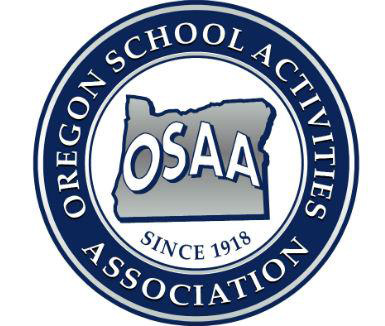Coaching football at small schools
Tips to help programs thrive with limited resources
At small schools all around the country resources are scarce, coach to player ratios are unbalanced, football players are learning both sides of the ball and special teams, and time is a precious commodity. Head coaches have to assure themselves that they are getting the most efficient use out of the coaching staff, players and practice time. And that can be accomplished with precise time management, creativity and thinking outside of the box.
As head coaches, we are taught to draw up practice plans but we are all guilty of the infamous “one more play.” The 20-minute team period turns into a 25- or 30-minute session, and consequently each period is pushed back. Inevitably, something ends up being cut from the practice session.
 To combat this, coaches can purchase a segmented timer, which is affordable and available at a number of outlets. If that’s not an option, have a student manager monitor the practice schedule, equipped with a watch and an air horn.
To combat this, coaches can purchase a segmented timer, which is affordable and available at a number of outlets. If that’s not an option, have a student manager monitor the practice schedule, equipped with a watch and an air horn.
Also, make sure that all coaches write down the drills that they want to conduct during their individual periods. Instruct coaches to “coach on the run,” never stop the drill and learn to teach on the fly. It’s also helpful to incorporate several drills into one. For example, running backs can take part in ball security drills coupled with cut drills, or defensive backs can run through the “W Drill” coupled with long ball at the end of it. The bottom line is coaches must plan out their practice schedules ahead of time and stick to it. Ideally, the head coach has time to makes their rounds throughout the practice field, providing input at all positions and on both sides of the ball.
Staff shortages
At small schools, coaching staffs are rather thin. Three-fourths of the people on my staff are lay coaches, and due to employment obligations they get to practice 30 to 45 minutes late. To combat this momentary lapse in coaching, we can employ one of two strategies.
First, if we know that one of our lay coaches will be late, we may schedule our special teams period first. We have a 15-minute special team session everyday, so placing it at the beginning of practice allows us to break up into minimal player groups facilitating practice time with fewer coaches, and it conveys to the players that we think special teams are important and a priority. Oftentimes, coaches put special teams last on the practice schedule.
Our second option is to combine position groups and work together. For example, we will bring together our backfield and our receivers to work on our perimeter running game, practicing our “Rocket” and “Buck” sweeps while coaching different blocking schemes. Defensively, we may pull together our secondary and linebackers to work on blitz replacement in our pass drops. Either strategy we employ allows for sufficient use of practice time.
Adding wrinkles
How many Sunday mornings, after watching opponent’s game film, have you decided to add a new wrinkle offensively or defensively? When I was an assistant at a larger school it was nothing to add in a new play or a different defensive front that we thought would benefit us against a certain opponent. Bigger schools generally equate to more players, allowing teams to play kids one way. That allows kids to only learn one side of the ball.

At a smaller school, players generally have to learn both sides of the ball. Now don’t get me wrong, I am as guilty as any coach when it comes to adding new wrinkles. However, as a staff we limit ourselves on what we will run.
Offensively, a running play must fit into one of our seven different schemes — trap, toss, sweep, down, power, TAG or belly. Our passing schemes are just as similar, only incorporating a three-step quick game and our play-action game. We follow the old “KISS” (Keep It Simple Stupid) rule. The less we have to teach, and the less our kids have to learn, the faster our kids can play.
With both our offensive and defensive schemes being fairly simple, we take a holistic approach to teaching. When installing something new, our coaching staff meets prior to the practice to discuss it as a staff. With limited coaches, the entire staff must be on point, on the same page and using the same verbiage. Nothing is more devastating at practice then a coach who is just winging it. This promotes lack of confidence in your coaching staff and fosters confusion and misunderstanding among your team. The bottom line is you must talk with your coaches prior to setting foot on the practice field.
Installing wrinkles on the practice field will be done with a brief team period first. We feel that it is imperative that each player understands the scheme in its entirety to truly comprehend why we do what we do. With this thinking in mind, we cross-train our players.
Offensively, our backfield players all learn each position’s backfield action and responsibilities. Our lineman, all learn to pull, trap and down block. The same coaching concept is used on the defensive side of the ball, so the nose guards work in tandem with our tackles. The linebackers work in their position group, as do the cornerbacks and safeties.
This approach helps us tremendously if we ever have injuries. For example, if our H-back goes down, which is our primary back, our next best athlete is commonly our first string Q or Z, rather than the number two H-back. By coaching up positions together as a whole, this allows for smooth transitions when an injury occurs.
Small schools offer many perks, but they also offer challenges in abundance. It’s an uphill battle we face, with disadvantages that our bigger counterparts do not face. With a little ingenuity and careful planning, you can have the same success as the big schools.
Zach Wagner is the head football coach at Mclean County High School in Calhoun, Kentucky.





